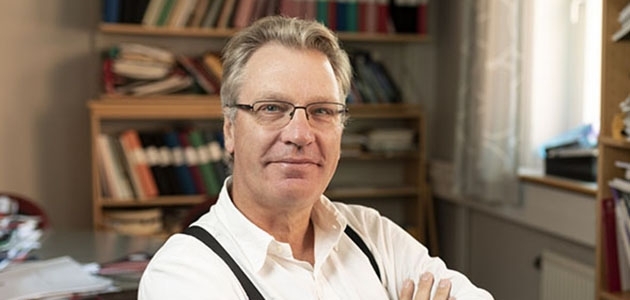ERC grants SEK 80 million to research on material theory
“This grant provides us with resources to meet one of science’s major challenges,” says Olle Eriksson, professor of theoretical magnetism, who is receiving an ERC Synergy Grant for the project Ultrafast Dynamics of Correlated Electrons in Solids.
Olle Eriksson, professor of theoretical magnetism at Uppsala University, has been granted a Synergy Grant of SEK 80 million by the European Research Council (ERC). The grant funds the multinational project Ultrafast Dynamics of Correlated Electrons in Solids (FASTCORR), which will be carried out in collaboration with researchers at the University of Hamburg in Germany and Radboud University in Nijmegen, Netherlands.
“A Synergy Grant is a quality indicator, so the fact that we are receiving it further confirms Uppsala University’s position as a leading participant in materials science, and it also gives us as a research environment resources to take on one of the great challenges of science, which individual teams rarely have the capacity to do,” says Eriksson.
New opportunities to construct materials
As a starting point, the project team will define the mechanisms that enable phenomena such as high-temperature superconductors, through which current flows without electrical resistance. In-depth knowledge of how electrons move in the materials according to the laws of quantum mechanics, what is known as the electron structure, also strengthens our ability to construct materials with the potential to address both energy problems and raw material shortages of attractive metals.
“The results of experiments performed with free-electron lasers – which produce light that is several orders of magnitude more intense than conventional light sources – are generally non-linear and difficult to interpret. Within the framework of FASTCORR, we want to create a solid theoretical foundation on which we can build practical tools that will streamline both predictions and interpretations of the electron movement in complex materials, including high temperature superconductors,” says Eriksson.
A platform to build on
Since the discovery of high-temperature superconductors in 1986, the theoretical understanding of this type of material has been insufficient to identify the microscopic mechanism behind the superconductor with certainty. The development of theoretical models, software and high-performance computers has now reached the level required to map the electron structure of certain materials, which is a platform to build on. Olle Eriksson sees this as an opportunity through international collaboration to create models and software that can open completely new doors for describing how the most complex electron systems will react in the interplay with extreme light sources, such as free electron lasers.
“FASTCORR further builds on an already existing scientific network, whose synergies will give the project the power needed to achieve the goals we have set for ourselves. In six years I expect that we will be ready to provide precisely the tools that materials research needs to perform targeted calculations in materials where the electron structure is guided by strong correlated effects.”
Facts
The Ultrafast Dynamics of Correlated Electrons in Solids project starts on 1 January 2020 and will initially run through 31 December 2025.
Read more
Project Description
Research in Materials Theory at Uppsala University (in Swedish)

